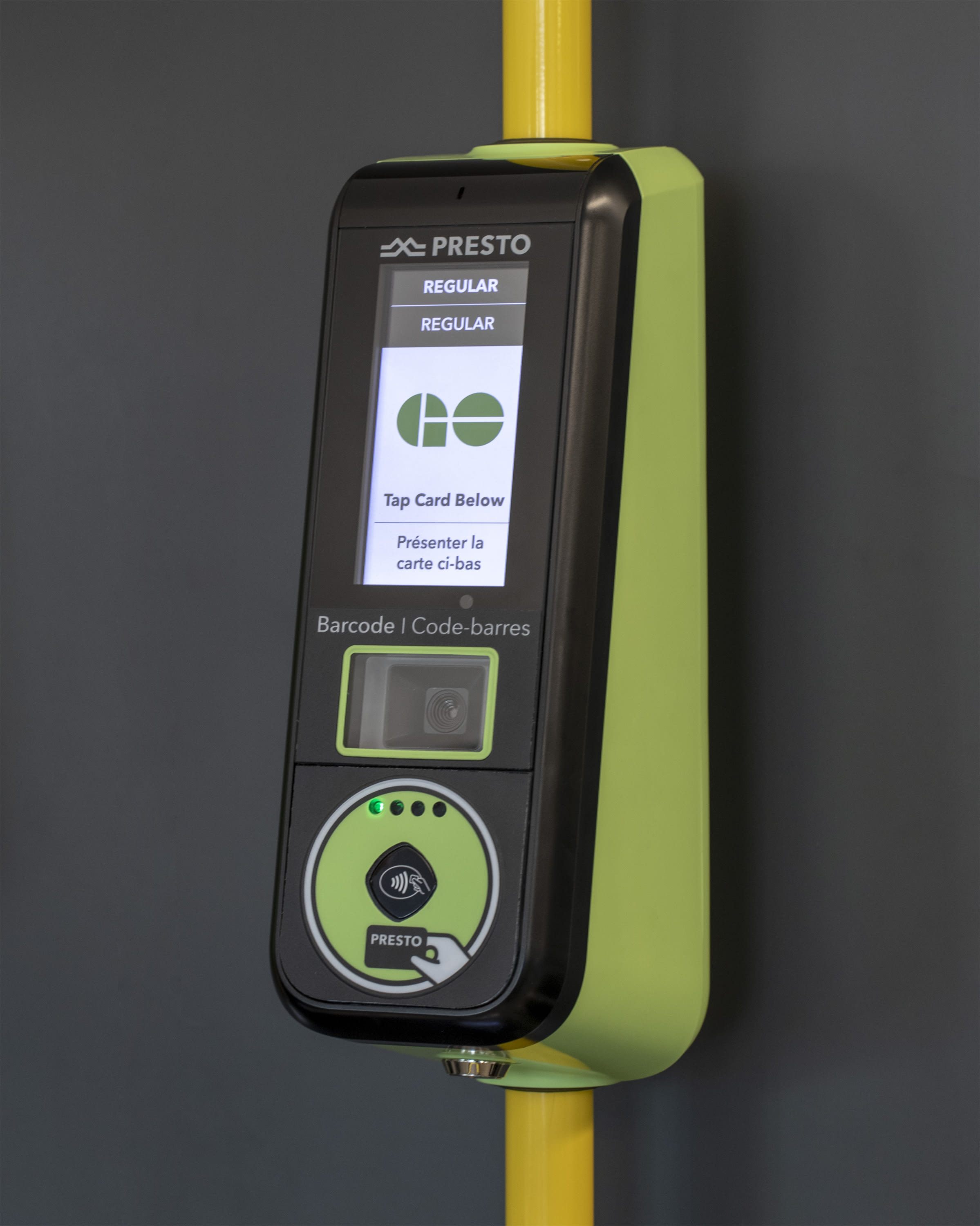New PRESTO devices offers glimpse into future of fare technology
Upgraded PRESTO payment devices are being installed on some buses and stations as part of a trial.
Dec 18, 2019
You know those photos of the latest car model, captured before the official mass rollout?
If you’re captivated by advancements in transit technology – or just a PRESTO customer interested in what’s to come – this is a little like that.
Starting now, travellers might spot some new PRESTO devices when travelling on GO or local transit agencies in the 905 area as part of a trial.
Latest model – Here’s a prototype of the new PRESTO devices that can be spotted across the GO network. There are plans in store for modernizing PRESTO that will give customers more ways to pay and these new devices already have the built-in capability to support these enhancements. For now, tap as you usually do. (Metrolinx photo)
Since GO Transit and local transit agencies in the 905 – Brampton Transit, York Region Transit, MiWay, Hamilton Street Railway, Durham Region Transit, Burlington Transit and Oakville Transit – were the earliest adopters of PRESTO, many of their devices have been in use for nearly 10 years. Now, as with any piece of technology, it’s time for an upgrade to ensure they continue to perform reliably in the future.
The most immediately distinguishing feature of the new devices is their look. In addition to updated branding, all of the devices – both on buses and at the stations – have a larger screen with an improved interface that makes them easier to read and interact with.
These enhancements, along with tactile elements and high contrast text, also enhance accessibility. The Metrolinx Accessibility Advisory Committee was kept involved through the design, build and testing of all the new devices to ensure their feedback was incorporated.
Despite their new look, customers can continue to tap on them as they always have.
In-station devices have a slightly different feature. GO customers can use the new ‘mode’ button to override a default trip or reverse a tap instead of using separate buttons to do that. By pressing the mode button, they can also check a card balance, rather than having to find a separate balance-checking device. YRT customers can press the mode button to check their card balance.
All of the in-station devices also have an audio mode with text-to-speech for enhanced accessibility. To activate, customers just plug in a 3.5mm headset jack to the right of the screen and follow the instructions.
What’s perhaps most interesting is the future capabilities of the devices. There are plans in store for modernizing PRESTO that will give customers more ways to pay and these new devices already have the built-in capability to support these enhancements.
Customers will notice the devices have a barcode reader on them. This means they’ll have the capability to read e-tickets in the future. They also have a contactless card reader capable of supporting payment by credit, debit and mobile phones. In order to enable these new payment functions, Metrolinx needs to upgrade the system. This is currently in the planning phases.
The new devices will be rolled out, in phases, to a select number of buses and stations first. They’ll primarily be installed on buses, but GO and YRT customers will see new in-station devices as well. For GO, they’ll be installed at Burlington, Appleby, Clarkson, Aurora and Newmarket, as well as on select GO buses throughout the system.
This trial period will give Metrolinx the opportunity to test how the devices function before installing them on all vehicles and stations on these transit systems in 2020.
Keep an eye out for these early versions – models of what’s to come for PRESTO users.
by Natalie Tutunzis Conseillère principale de Metrolinx, Planification des communications
